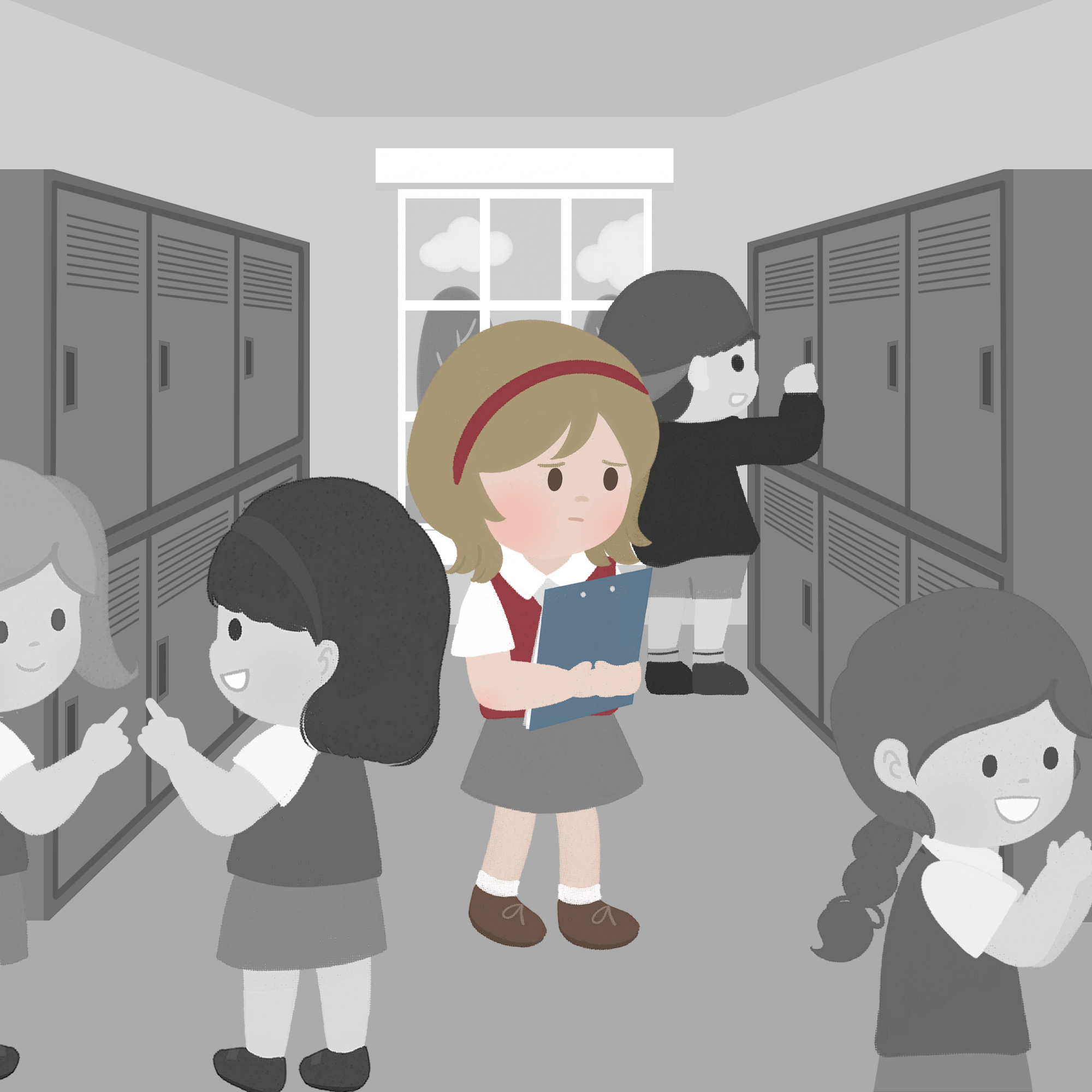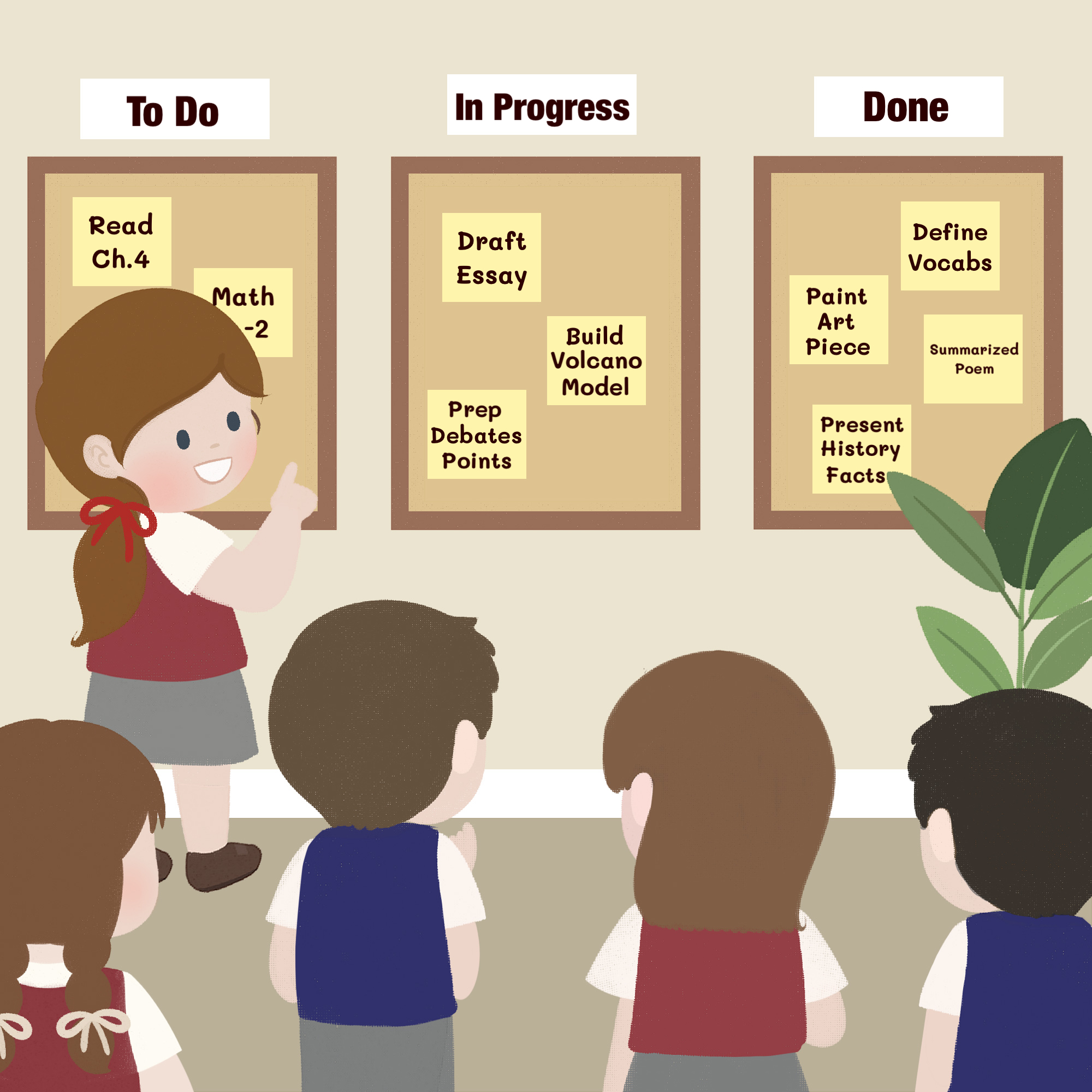An article by Richard James Rogers (Award-Winning Author of The Quick Guide to Classroom Management and The Power of Praise: Empowering Students Through Positive Feedback). This blog post has been beautifully illustrated by Pop Sutthiya Lertyongphati.
Students who are quiet in class are often the ones who are most overlooked by educators. They tend to be compliant; they rarely (if ever) ask questions; they turn in their homework on time and generally just get on with things.
One could be forgiven for thinking of such learners as the ‘perfect’ students.
This is, however, quite a narrowly focused viewpoint and stance to take. Such students may be well behaved, but how can we be sure that they have understood the content we have delivered in a lesson (aside from formally assessing them)? Additionally, how are we, as educators, helping our quiet and withdrawn students to develop their self-confidence and key skills, such as public speaking, teamwork and problem-solving?
It is my conviction that such students can be reached, as I have successfully engaged hundreds of such learners over the past 17 years in my role as a secondary school mathematics and science teacher. The process requires patience and long-term planning, but the results one can achieve are well worth this investment in time and energy.
So, let’s explore some practical strategies to engage these quiet and withdrawn students.
Strategy #1: Use more spatial response tasks in class
The concept here is quite simple: a ‘spatial response’ task allows students to answer questions without verbalizing anything.
“How is that possible?” you might ask.
Well, instead of the traditional ‘hands up’ for answering a question, students use movement and their physical bodies to signal their responses. This is a good first step in any long-term ‘engagement development’ plan you may have for a shy student, as they can interact with the lesson content without having to say anything. That. at least, is better than no engagement at all.

Two of my favourite such spatial response tasks are….
A ‘Human Graph’ and ‘True or False’ Walls
Do you want to know the opinions of your students on a subject matter? Maybe you’re taking a survey (e.g. Which day is the best for canteen food?). Maybe you have a list of multiple-choice questions and you want a fun way to get the kids through them.
A human graph might be the right tool for you!
What if you just want to quickly check your students’ conceptual understandings (e.g. as a plenary)? You could ask some true/false questions and get the kids to raise their hands, or you could use a way cooler (and more fun) method!
Choose one wall to be the ‘True’ wall and one to be the ‘False’ wall. Once you’ve asked the question, get the kids to walk to the correct wall. It’s that simple! Just make sure that the kids walk back to the middle of the classroom before each question.
This great illustration from Pop shows you the steps to take for each of these activities:

I’ve written a separate blog post that covers spatial learning activities in more detail, here. Please do check it out – all of the activities I write about have been field tested by me in the classroom, and they work!
Strategy #2: Do more ‘live marking’
Live marking means that you have more one-to-one conversations with students about their work, in real time. Here’s another great thing about it too: Live marking is not only a highly efficient formative assessment tool, but it also provides a comfortable space in which most of your shy and quiet students will be willing to open up and talk. There are two main methods to implement live marking: ‘diffusively’ and ‘absorptively’. Let’s explore these in more detail.
Diffusive Live-Marking
This is really simple:
- Set a task for your students to complete (it could be a Google Slides presentation, a worksheet to complete, some questions from their textbook to do, etc.).
- When a few minutes have passed, ‘diffuse’ through the classroom by walking around with a marking pen in hand (I use a red pen).
- Mark student work in real time, as they are doing it. Of course – reinforce your written comments with verbal feedback (and you can even write ‘verbal feedback give’ or ‘VF’ on the work).
Hey presto – you just saved yourself an hour or so of after-school marking time, and you’ve engaged some quiet students in some short conversations.
Absorptive Live-Marking
In this scenario, one can imagine the teacher being like a ‘sponge’ that ‘absorbs’ the students: instead of walking around the classroom to mark work in ‘real-time’, you sit at your desk (or at a designated ‘consultation point’ in the room) and call the students to your desk one-at-a-time.

Which is better – absorptive or diffusive live-marking?
In my personal opinion, both forms of marking can have a role to play in engaging our shy learners.
I tend to use absorptive live-marking more than diffusive as I am lucky enough to work in a school where the overwhelming majority of the students are very well-behaved. This means that I can call them to my desk one-at-a-time and the class will still stay on-task. A big advantage of the absorptive method is that I can give more detailed and personal feedback to each student and I have my whole desk-space to neatly mark the work on.
Strategy 3: Utilise Live-Quiz Apps
These have been around for quite a while now. Most educators have heard about Kahoot!, but did you know that are a wide-range of live quiz apps, similar in style to Kahoot!, that utilise multiple-choice questioning?
When it comes to engaging shy, withdrawn and quiet students, Quizlet Live and Blooket are my two most favourite apps as they encourage peer-to-peer communication. Let’s find out a little more about them.

Blooket
Blooket distinguishes itself from other quiz-based apps in that there are actually multiple types of games that you can play with the students, all based on the much-loved multiple-choice quiz format. My personal favorites are:
- Crypto Hack: With a dark theme and Bitcoin-centric atmosphere, Crypto Hack is one of the students’ favorites. After answering a series of questions correctly the students are then able to guess fellow students’ passwords (passwords are chosen from a pre-determined list that the game provides). A correct guess allows the player to hack the other player and steal imaginary crypto currency from them.
- Fishing Frenzy: This one’s a bit crazy – hilariously so! Students, again, answer multiple choice questions but this time they cast a virtual fishing line into the water after answering correctly. What they pull out are usually different types of fish, but they can pull out junk and other crazy objects too. Players are ranked by the weight of fish they pull out of the water. Players can also ‘plunder’ other players’ fish and steal their poundage. It gets very competitive and you can expect to hear a lot of laughter in the classroom as this gets going!
- Tower Defense: According to Blooket themselves, this is their most popular game. In this mode, the students answer multiple choice questions and are then presented with a map. On this map, the students must place towers in strategic positions to shoot enemies that appear on-screen. In this sense, Tower Defense is more similar to the kind of computer games that children are playing in their free time than all of the other game modes provided.
Quizlet Live
Hidden within Quizlet‘s excellent flash card system is a little-known activity called Quizlet Live. When the teacher selects this, the students in your classroom join the game (by entering a code on their devices) and are then placed into random teams. Once the game begins, all of the players in each team are given different questions to answer, so they MUST help each other if they want to win. The first team to pass twelve rounds of questions is the winner, and the teacher’s screen shows the real-time position of each team (1st place, 2nd place, 3rd place and so on).
Quizlet Live has two features which I believe make it a very unique learning tool:
- Students can read through the flash cards for the game as they’re waiting for other students to join. This, I believe, gives Quizlet Live a big advantage over many other quiz-based systems as students are not sitting around doing nothing as they’re waiting.
- Quizlet Live provides each team member with a different question, making the game more thorough/rigorous than some other quiz-based systems. Every member of the team has to answer their question correctly before the team can move to the next round.
Quizlet has an immense database of flash cards created by other educators from all over the world, so it’s highly likely that you’ll find a question set that is suitable for your topic. If not, then you can make a set yourself.
Strategy 4: Try ‘Flipped Learning’
Flipped Learning allows students the opportunity to research a topic before it is explored in class. This may provide your quieter students with more confidence to speak up as they will have had a chance to acquire some knowledge before the lesson begins.

The following extract comes from a great guest blog post on Flipped Learning that Kiara Miller from The Speakingnerd wrote for me back in March 2023:
“A flipped classroom is a form of blended learning model where students learn about new concepts at home. They then discuss their findings with their teachers and the rest of the students in a classroom. With this teaching approach, students interact with the course material beforehand and while inside the classroom, they engage in interactive group learning activities.
Students aren’t bombarded with new material, but rather, they come with their own understanding of the concepts. That is through online videos and any other supporting content that can be text-based. It can also be provided by a teacher or students can do their own research.“
You can read the full blog post, here: https://richardjamesrogers.com/2023/03/14/5-reasons-for-teachers-to-try-out-flipped-classrooms/
Strategy 5: Seek professional help for the student if no improvement is observed
All students who exhibit shy and withdrawn behaviors have underlying reasons for their lack of confidence, or lack of engagement. In some cases, it’s worth referring such students to trusted professionals, such as school counselors, who will be able to work with them on a one-to-one basis.
We welcome you to join the Richard Rogers online community. Like our Facebook page and follow us on Twitter for daily updates.










































